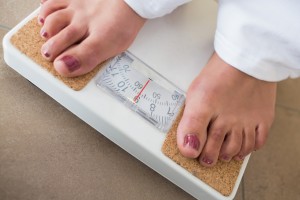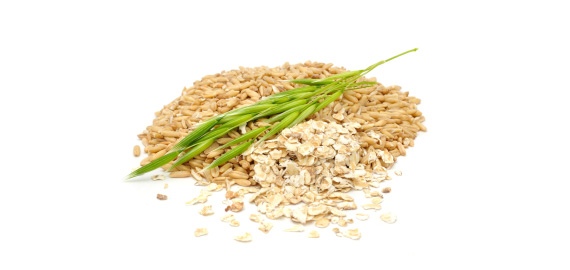9 Practical Ways To Lose Weight This Summer

We’ve all heard the advice: if we want to lose weight, we need to eat less and move more. It seems simple enough, but it’s a largely useless proposition without a plan.
What I've found to be effective (and what I've written about in several books) is the 5:2 approach to intermittent fasting. This requires calories to be slashed to a quarter of the usual intake (that’s about 500 calories for a woman, 600 for a man) just two days a week. The other five days, you eat normally.
Do this, and you can expect to see changes on the scales, and, crucially, significant benefits to your health, including lowering the risk of a number of age-related diseases.
So what realistic, daily steps can you make right now to take you from hopeful words to guaranteed action? Below are my top 9 weight-loss tips; try some, or all, of these for six weeks and you may well find that you’ve gone down a size, but — far more importantly — you’ll have started to modify your appetite and your attitude to food.
1. Take an "alcoholiday."
One of the smartest, swiftest routes to weight loss is to cut out (or cut back on) alcohol. Sadly, alcohol is chemically similar to sugar, so drinking it will set off the same insulin resistance that can promote weight gain. Your glass of Chardonnay or your Mojito contains plenty of calories, but very little nutritional benefit — so, for six weeks, aim to give it (and your liver) a break. Think of it as an "alcoholiday." And if you must drink? Try a white wine spritzer; make every second drink water; and watch the mixers. (OJ will double the calorie count of a vodka shot.)
2. Choose your carbs with care.
Highly refined carbohydrates — the processed white carbs that are the basis of so many meals and snacks — will spike blood-sugar levels and encourage the pancreas to produce insulin, which both facilitates the accumulation of fat, and then guards against its depletion. Swap fast-release, refined carbs for slow-burning, unrefined ones: jumbo oats, brown basmati rice, stone-ground wholemeal bread. Small change, big impact.
3. Fight the 50/50s.
We humans crave energy-dense fat-sugar combinations, but, according to neuroscientist Professor Paul Kenny at the Scripps Research Institute in Florida, food with a 50:50 fat:sugar ratio interferes with our mechanisms of self-regulation; there’s simply no OFF switch, as there would be when consuming either macronutrient alone. While this particular ratio doesn’t happen in nature, it does occur in plenty of the treats we’ve come to know and love: cheesecake, donuts, fudge brownies… So strike the 50:50s off your shopping list — just for a while — and make a bid for freedom.
4. Cruise the Med.
It may be a shorthand way to say "axe the junk," but the good people of the Mediterranean know a thing or two about healthy eating. For a six-week period, take a leaf from our Italian cousins and move towards a diet rich in vegetables, whole-grains, fruit, nuts, olive oil, lean protein and low-fat dairy. Bellissima!
5. Stick with soup.
Soup, according to research from Penn State University, is a great appetite suppressant because it consists of a hunger-busting combination of liquids and solids; eat it before a meal and you can lower your overall calorie intake by up to 20% compared to a meal without soup. Alternatively, swap your daily lunchtime sandwich for a veg-based soup … you’ll lower your carb and calorie intake, while increasing your veg quota.
6. Implement the Rule of Three-Quarters.
It’s a simple, almost obvious, idea, but a great way to put good diet sense into practice: just fill your plate with veg at the expense of meat and carbs – a 75:25 ratio would be ideal. The idea is to make meat a treat, and give carbs a supporting role – making the veg star performers. For plenty of great veggie 5:2 meals, have a look at The Fast Diet Recipe Book and Fast Cook, or check out the recipes at our website.
7. Go on portion patrol.
It’s easy to think that the portion we are served is the amount we actually want, or need, or can manage — even though portion sizes in restaurants and food outlets have rocketed in the last two decades. We tend to eat 92% of the food we serve ourselves — so serve a little less. We also tend to go on eating until the plate is done. Again, pay attention. Downsize. A smaller plate? Why not?
8. Junk the juice.
Fruit juice is a higher sugar, lower-nutrient version of its source — and it contains less fiber, too. Besides, plenty of the nutritional goodies in fruit are concentrated in the skins, which tend to be lost in juicing. If you want apple juice, eat the apple, and have a glass of water with it. (It’s important to stay hydrated when on the 5:2.)
9. Change your coffee order.
While coffee itself is no bad thing, the dairy and sugar that often go into it can be real calorie traps. For the next six weeks, swap your usual latte for black coffee, green tea, herb tea. You may well find that after six weeks, the milky, frothy lattes you once adored have lost their allure… this is the ‘brain retrain’ you’re after: a change of mind to change your shape.
The Fast Beach Diet, by Mimi Spencer, with a foreword by Dr. Michael Mosley, is out now from Atria Books.
Photo Credit: Shutterstock.com
-
Sugar is Killing You
One of the world’s deadliest killers couldn’t appear any sweete
-
Diet Soda; Is It Good Or Bad If You Are On A Diet?
The debate over whether diet soda is a d
-
How To Lose Belly Fat In 1 Week
Imagine you have a special event coming up soon and you really have to
-
Is the “Balloon Pill” A Weight Loss Miracle?
According to the Center of Disease Control, more than o
-
The Benefits Of Combining Natural Weight Loss Pills With Exercise For Fat Loss
Ask any trainer, health care expert, and fitness enthusiast, and they
-
Maintaining Weight After Weight Loss
I presume because you are reading this article, that you have managed
- DON'T MISS
- Crazy, Interesting Ways To Burn Calories Over The Course Of A Day!
- NutriSystem Reviews - A Closer Look At The NutriSystem Meal Plans
- Is Diet or Exercise Better for Weight Loss?
- 4 Mental Shifts To Make When Youre Struggling To Lose Weight
- Diet Delivery - 3 Signs It Can Help You Lose Weight When Traditional Diets Fail
- 4 Motives Why You can not Reduce Pounds
- Weight Loss Motivation Tips- Dont Lose The Mental Game
- Weight Loss Diets - Why Do People Gain Weight in the First Place?
- California Power Crisis Aftershock: The Potential Modification Of Western Power Contracts
- Atkins Diet Plan Its Really Not Easy




